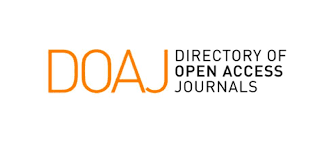PENGKLASIFIKASIAN STATUS GIZI BALITA MENGGUNAKAN ANALISIS DISKRIMINAN
Abstract
Nutrition is one of the risks that trigger morbidity and mortality. Malnutrition, especially at an early age, will increase infant and child mortality and have short stature as adults. The standard that can be used to measure chronic nutritional status is to classify the nutritional status of toddlers based on height according to age, one of the methods that can be used in this classification is discriminant analysis. Discriminant analysis is a statistical analysis used to classify individual status into classes or groups based on a set of variables. The classification of the nutritional status of children under five is categorized into stunting and normal groups based on the variables under five, birth length, birth weight, anemia status and mother's age during pregnancy using discriminant analysis on secondary data taken in 2015 as many as 116 samples, with birth weight as an indicator of participation in model with a classification accuracy rate of 65.6% on training data and 74% on testing data.
Downloads

This work is licensed under a Creative Commons Attribution 4.0 International License.

This work is licensed under a Creative Commons Attribution 4.0 International License.









